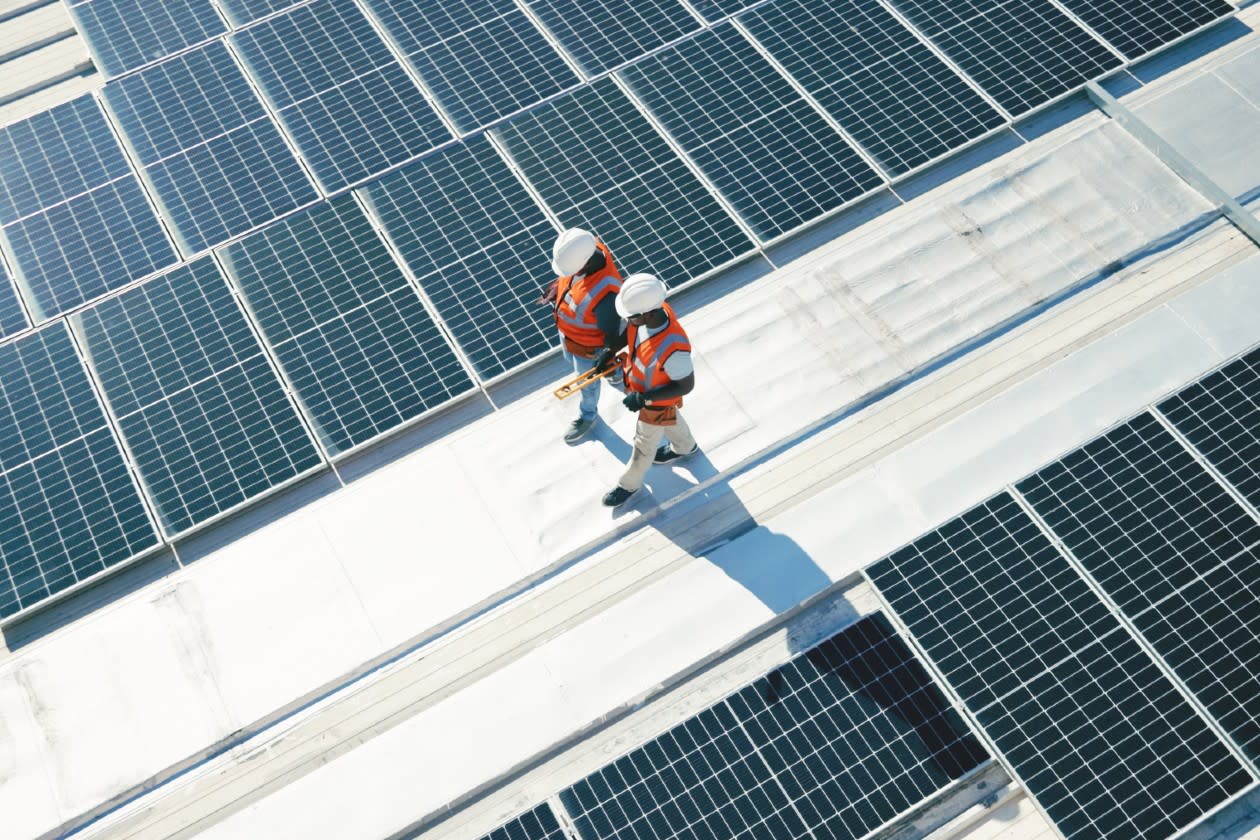Global temperatures are rising at an alarming rate. The past year has been more than 1.5°C hotter than 100 years ago.
The Paris Agreement aims to limit global warming to well below 2°C, making net zero a key goal for nations worldwide.
However, reaching this goal presents significant challenges, and opportunities, across various sectors.
How does climate change impact investing?
This is where the amount of greenhouse gases emitted equals the amount removed from the atmosphere.
Direct emissions by sector
Energy – the main emitter
The energy sector is responsible for a third of emissions and is facing significant challenges – the sector is very dependent on fossil fuels and needs large-scale infrastructure changes.
However, expanding renewable energy sources like wind and solar, and investing in energy storage technologies, can dramatically reduce emissions.
In fact, electrification, renewables, nuclear, carbon capture, utilisation and storage (CCUS), and hydrogen could deliver over 70% of the emissions reductions needed to achieve net zero by 2050.
Added to that, improvements in technology performance and efficiency can contribute another 13% in emissions reductions.
Decarbonising the energy sector is crucial as it can unlock emission reductions in other sectors, making it a key focus for achieving net zero.
With the right investments and policies, the energy sector can achieve net zero, driving broader progress across the economy.
Share of electricity generation from fossil fuels, renewables and nuclear
What about industry?
Industry, which accounts for nearly a quarter of global emissions, faces significant challenges, but can also offer remarkable opportunities for achieving net zero.
High-emission subsectors like cement, waste, chemicals, and metals can adopt energy-efficient technologies, switch to low-carbon fuels, and implement carbon capture and storage (CCS).
Innovations like low-clinker cements, advanced recycling, green chemistry, and hydrogen fuel are paving the way for industrial decarbonisation. Despite the challenges, technological advancements and regulatory pressure are driving this progress.
Agriculture and forestry
Agriculture, forestry, and land use (AFOLU) accounts for 22% of global emissions, driven by deforestation, livestock-related emissions, and unsustainable farming practices.
In fact, about half of AFOLU emissions are predominantly from deforestation.
Promoting reforestation, improving land management practices, and reducing methane emissions from livestock are all solutions that can help.
While these challenges are deeply rooted in traditional practices and economies, ongoing efforts in sustainable agriculture and forestry are showing promising potential.
Transport – a new future on the horizon?
The transport sector, responsible for 15% of emissions, must accelerate the shift to electric vehicles (EVs), improve public transport systems, and develop sustainable aviation fuels to reduce its reliance on fossil fuels.
Rapid advancements in EV technology and increasing public and private investments in sustainable transport infrastructure is showing that achieving net zero is possible.
As of January 2024, EVs made up over a third of the global market share. The key lies in continued innovation and widespread adoption of clean transport technologies.
Emissions by transport sector
Building a new future?
Buildings, which account for 6% of emissions, can become more energy-efficient by retrofitting for better insulation, adopting smart energy management systems, and using sustainable construction materials.
In China, wider adoption of heat pumps could help cut the country's buildings carbon emissions by a staggering 75%.
The building sector has substantial opportunities for reducing emissions through relatively straightforward measures.
Is net zero possible?
Achieving net zero is undoubtedly challenging, but not impossible.
We’re going to need a combination of technological innovation, economic investment, political will, and individual action. Not to mention, cutting emissions across the UK, in particular from buildings and transport, could yield billions of pounds in economic co-benefits, leaving people healthier and better off.
Investors can play a significant role in supporting the transition to net zero. By choosing companies and funds that prioritise sustainability, retail investors can drive demand for clean energy and innovative technologies, all while benefitting from the opportunities.
This article isn't personal advice. If you're not sure if an investment is right for you, ask for financial advice. All investments fall as well as rise in value, so you could get back less than you invest. Past performance isn't a guide to the future.
2 fund ideas to benefit from the net-zero transition
Investing in these funds isn’t right for everyone. Investors should only invest if the fund’s objectives are aligned with their own, and there’s a specific need for the type of investment being made. Investors should understand the specific risks of a fund before they invest, and make sure any new investment forms part of a diversified portfolio.
For more details on each fund and its risks, use the links to their factsheets and key investor information.
Baillie Gifford Sustainable Income
Baillie Gifford Sustainable Income fund looks to support the transition to a low-carbon future, while providing an income that grows by more than inflation over time.
This fund offers revenue-based restrictions, excluding companies with significant exposure to fossil fuel extraction and production (≥10% revenues) and thermal coal distribution (≥30%).
The managers also conduct detailed climate audits of all holdings to make sure their decarbonisation claims are credible and actionable.
The fund invests around 20% in the industrials sector, focusing on companies that are pivotal to the decarbonisation effort.
One standout example is the utilities company Terna, which is developing an essential electricity grid in Italy. The managers think Terna’s is undervalued, anticipating strong returns as the grid supports the shift to renewable energy.
Another notable holding is the American energy company WEC Energy. Despite a current carbon-heavy portfolio, WEC Energy is investing heavily in renewable energy to eventually phase out coal. This forward-looking strategy not only aligns with global decarbonisation goals, but also presents promising growth potential.
The fund invests in emerging markets, high yield bonds and derivatives, all of which add risk. It also takes charges from capital, which can increase the income paid, but reduce the potential for capital growth. This fund also holds shares in Hargreaves Lansdown plc.
Stewart Investors Indian Subcontinent Sustainability
The Stewart Investors Indian Subcontinent Sustainability fund focuses on sustainability in emerging markets.
The fund avoids companies with significant exposure to fossil fuels (≥ 5% revenue exposure), including coal and unconventional oil and gas.
The managers make sure all companies in the portfolio must contribute to, and benefit from, the long-term development of the region. Each company is evaluated for its role in advancing climate solutions, ranging from recycling innovations and grid flexibility to efficient farm irrigation.
A standout recent addition to the fund is VST Tillers Tractors, a major player in India's small farm equipment market.
With new leadership at the helm, VST is expanding its product lineup to include electric tractors. It’s also positioning itself to meet the rising demand for innovative and environmentally-friendly farming solutions.
This strategic investment not only aligns with the fund’s sustainability criteria, but also offers potential for substantial growth.
This fund invests in a single emerging market which adds risk and so investors should expect more volatility than a broader emerging markets fund that might be more diversified. It also has the flexibility to invest in smaller companies, which adds further risk. It should therefore only make up a small part of an investment portfolio.
This week is Good Money Week, a national campaign promoting responsible investing.
We’ll be marking Good Money Week with a series of articles to help you invest while managing environmental, social and governance (ESG) risks.
To make sure you don’t miss out, sign up to our Editor’s Choice email and we’ll send you our latest expert insights and ideas from the week and more.



